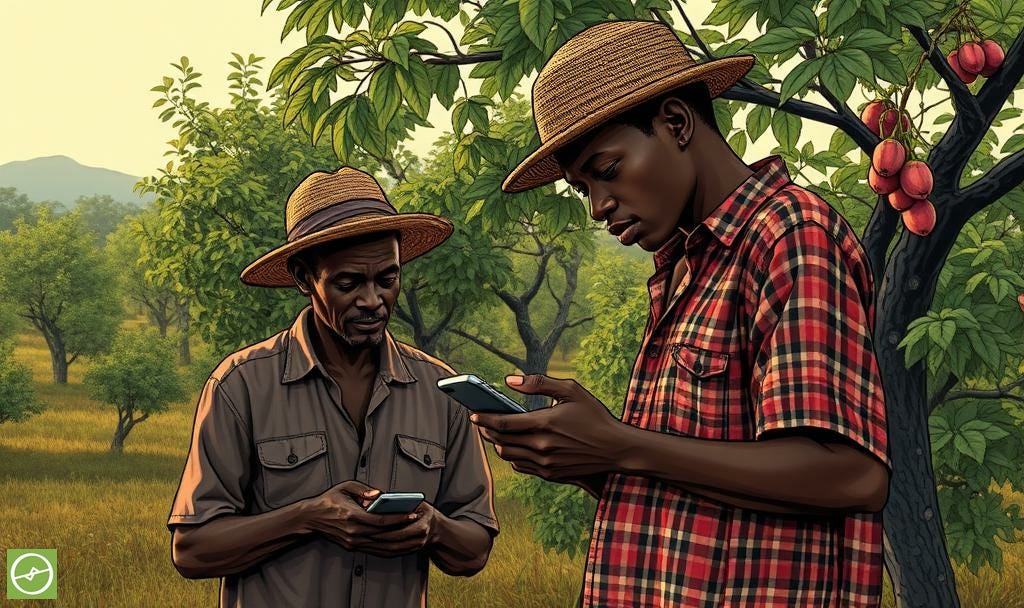Empowering Smallholder Farmers with AgTech
How digital tools, precision farming, and data-driven insights are transforming smallholder agriculture and food security in developing nations.
Empowering Smallholder Farmers with AgTech
Smallholder farmers make up around 90% of the world’s farmers. They are essential to global food security, yet they face persistent challenges. Low productivity, limited access to inputs and markets, and increasing vulnerability to climate shocks.
The urgency is clear. By 2050, agriculture will need to feed close to 10 billion people. We will have to nearly double food production while using fewer resources and reducing environmental impacts. This much needed transformation will demand innovation, and technology is a critical enabler.
Digitalisation: A Game Changer
Digital tools can boost productivity, reduce costs, and improve resilience.
Many of these solutions fall under precision agriculture; using data and technology to guide decisions, optimise resources, and improve yields. For smallholder farmers, this means farming can become more profitable and sustainable.
While high costs have been a barrier, advances in mobile technology, falling data prices, and creative service models are making these tools more accessible than ever.
Five AgTech Innovations Driving Change
Mobile Phones and Apps:
The rapid growth in smartphone use is transforming smallholder agriculture. Mobile apps connect farmers with suppliers, markets, and advisers. They provide real-time monitoring, record-keeping, and two-way communication—bringing precision agriculture into farmers’ pockets.Satellite Remote Sensing:
Satellite imagery offers large-area crop health monitoring, nutrient analysis, and even yield estimation. While cloud-cover and internet access can limit use in some regions, the growing availability of high-resolution images is helping farmers make informed decisions.UAV (Drone) Remote Sensing:
Drones capture ultra-high-resolution imagery for pest and weed detection, yield forecasting, and anomaly mapping. They also enable precision input applications, reducing waste and labour. While still costly for individuals, service providers and cooperatives are making drone solutions more widely available.On-site Sensors
Sensors measure soil moisture, pH, temperature, and more; helping farmers fine-tune irrigation, fertiliser use, and planting schedules. Advances in low-power networking and cloud data processing make real-time monitoring possible, even in remote fields.Data Processing and Analytics
Big data analysis turns raw information into actionable insights. The challenge lies in infrastructure gaps, digital literacy, and cost. Public-private partnerships will be key to expanding affordable internet and mobile-first decision tools to rural communities.
The Road Ahead
The technology is here, but accessibility and skills remain barriers.
Many smallholder farmers lack digital literacy and the training to fully benefit from AgTech tools. Partnerships between governments, private sector innovators, and civil society can help close this gap - delivering training, building capacity, and ensuring that the majority of the world’s farmers can thrive in a digital age.
If we want to meet the food security challenge ahead, smallholder farmers must be equipped with the right tools, skills, and support to farm smarter, not harder.
Partner with local service providers for cost effective solutions.
Use low‑cost cloud-based platforms (ie. Aerobotics) to explore basic slope and contour maps, with nominal data processing fees.
Combine remote sensing data with simple field observations to focus limited resources on the most critical areas.
Join co‑operative cost‑sharing programmes.
Especially effective in high‑value crops, or where full-farm orchards hectares are below usual data-collection Minimum Order Quantities (MOQs).
By starting small, collaborating locally, and using the tools already within reach, smallholder farmers can unlock real value from digital agriculture.
Every step toward smarter, data‑driven farming strengthens resilience, improves profitability, and builds a more sustainable future for both farmers and the communities they feed.










